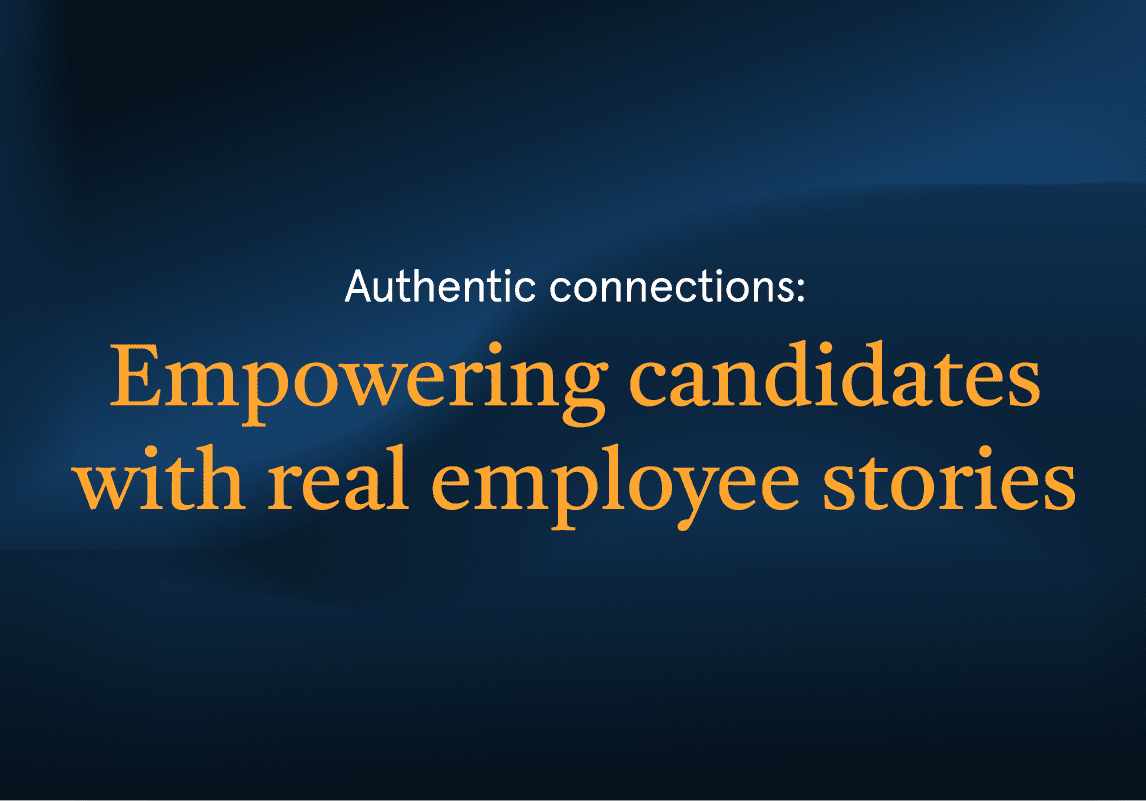In a competitive job market, it’s essential to meet your potential candidates where they are – and today, everyone is spending more time on their cell phones. Studies show that 85% of people with smartphones would rather receive a text message than a call or email, which means employers can and should incorporate text recruiting into their overall recruitment marketing strategy.
What is text recruiting?
Text recruiting is the use of SMS messages throughout the hiring process. While emails might get lost in spam, or be overlooked in a crowded inbox, text messages typically have much higher engagement rates. According to Dexatel, 82% of text messages received from businesses are read within 5 minutes. What’s more, text messages on average have a higher response rate than other channels —with a response rate of 45%, in contrast to email which sits at around 6%.
The current job market is competitive, so having access to a channel with a high response rate, and a fast response time, will amplify your talent attraction strategy. Savvy companies are using text messaging throughout every stage of the recruitment process to help attract, engage and convert top candidates into new hires.
Best practices for job applications via texting
Ready to start using text messaging in your recruitment marketing and hiring processes? Here are some best practices for using text recruiting to attract top talent.
Do: Follow text etiquette
Text hiring has an established etiquette. Before you communicate with a candidate via text messaging, make sure you have permission to contact them —and document their communication preferences throughout the hiring process. It’s also best to keep outbound communications within established business hours. Nobody wants to be woken up by a text alert late at night!
Do: Drive candidates to convert with text-to-apply
In today’s competitive recruitment landscape, hiring teams need to employ innovative strategies to attract and engage candidates. Technology can help, with tools enabling teams to use QR codes or text-to-apply automations to capture jobseeker interest and information. Companies can engage potential hires anywhere — whether they’re commuting, shopping, or socializing —broadening the talent pool and accelerating the hiring process. In this dynamic era of talent acquisition, technology like Clinch’s Text Engage empowers companies to connect with top talent swiftly and effectively, ensuring they stay at the forefront of recruitment trends.
Do: Use texts to keep candidates up to date
Hiring managers can also use text messages to communicate with candidates throughout the hiring process. Text messages are a quick and easy way of updating a candidate on how their application is proceeding, or of sending interview reminders automatically to ensure no candidate falls through the cracks. Failure to communicate your interest in candidates can lead to them seeking and accepting employment elsewhere. Using texts to keep candidates engaged can help companies provide a memorable candidate experience —and help boost offer acceptance rates.
Don’t: use a personal phone
If your company is planning to text candidates, it’s important to use a dedicated text messaging service to communicate with candidates throughout the hiring process. Why?
- Faster communication: A dedicated text messaging service allows your hiring team to automate text messages. Additionally, you can use templates to send initial communications, establish interviews, and present questions to candidates.
- Collaboration: If your team uses private phones to communicate with candidates, it can be difficult to work as a team. It’s essential for teammates to be able to communicate with candidates seamlessly through one number as the candidate works through the pipeline.
- Security: Candidates want to be updated throughout the hiring process. This may lead to candidates texting individual recruiters on their personal phones outside of business hours, or rejected candidates reaching out to complain to a recruiter.
What’s more, a centralized messaging system can integrate with your existing tech —like a CRM or ATS— meaning it’s easier to keep track of communications and responses. This central source of truth can improve cross-functional visibility between recruiters, sourcers and hiring mangaers.
Don’t: give results via text
Text messages are a powerful communication tool, but they aren’t appropriate for every interaction. For instance, application rejection is best left to email and phone calls, so you can properly relay your appreciation for the applicant’s interest, time, and effort.
On the flip side, when your recruiting team has decided to extend an offer to a candidate, it will likely be a more involved exchange of information than a text message can convey. When does the candidate start? What are the offer details? Does the candidate accept the offer? These conversations are better held through a more direct medium —like a phone call, followed by email confirmation.
Final thoughts:
Businesses looking to optimize their career site to attract diverse talent should consider using Clinch. Clinch can professionally develop your hiring process from the ground up. Source better applicants, and build robust talent pools with smart career sites, a customizable CRM, state-of-the-art Text Engage tools and more. Ready to see Clinch in action? Book a demo today to see how you can level up your recruitment.



